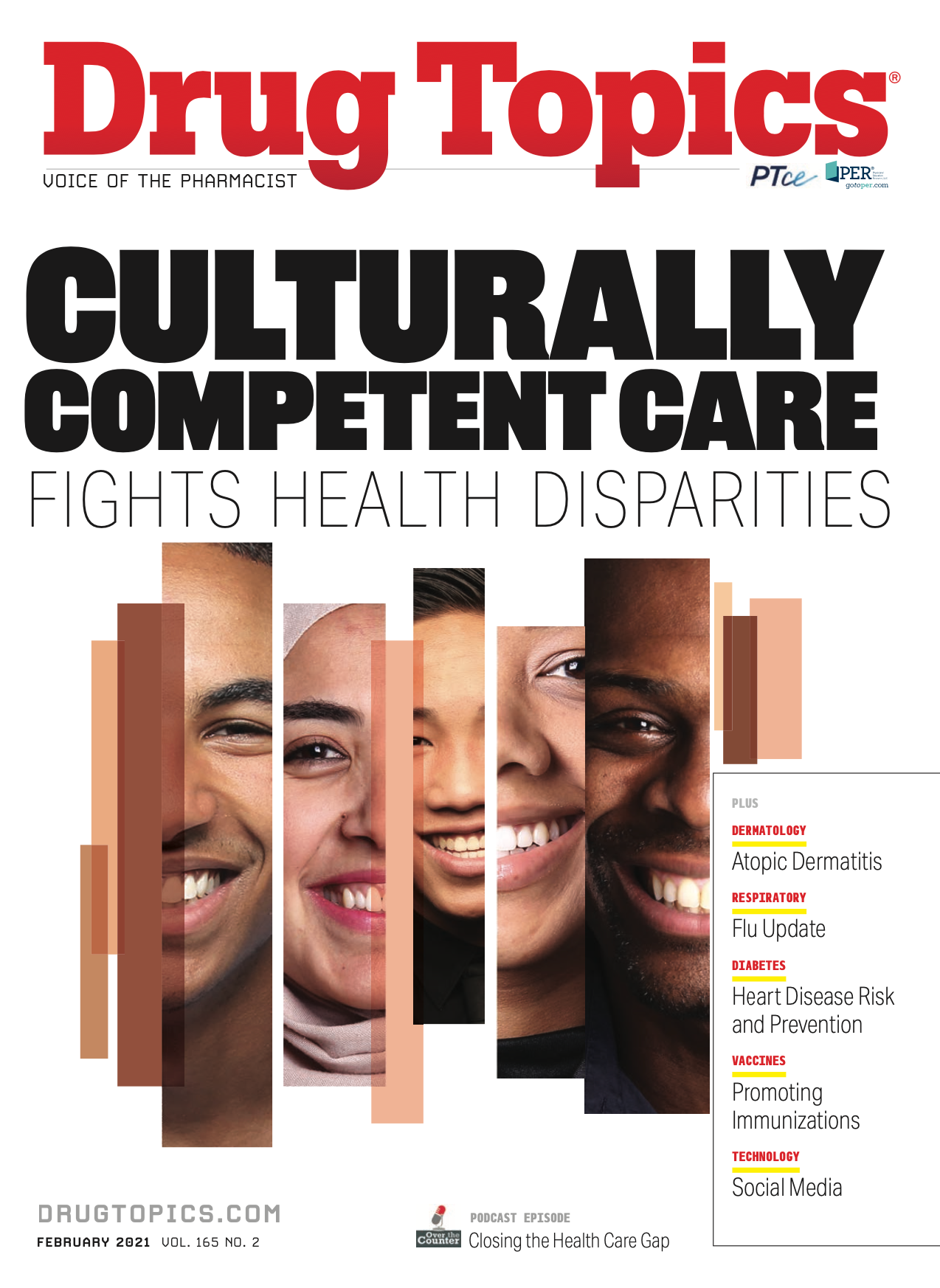Promote Immunization Services More Effectively
Pharmacists can employ several strategies to enhance these programs.

Immunization is one of the most familiar pharmacy clinical services; approximately 77% of community pharmacies offer flu vaccines and 73% provide other immunizations, according to the National Community Pharmacists Association (NCPA).1 All 50 states have had authorized pharmacists to immunize patients in some form since 2010, but promoting such services also is necessary to achieve results.
“People don’t often come in out of nowhere asking for flu vaccine or a shingles shot,” said Beverly Schaefer, RPh. “You need to start the conversation.”
Schaefer has been starting immunization conversations at Katterman’s Sand Point Pharmacy in Seattle, Washington, for more than a decade. She is co-owner and evangelist-in-chief for a program that delivered over 4000 influenza immunizations from September 1 to October 10, 2020, even amid store closures for Sundays and Labor Day weekend.
Promoting immunization services is more about generating questions and providing information than about selling, she said. Something as simple as a countertop card asking “Have you had your shingles vaccine yet?” can be highly effective. Patients see the sign while they’re doing something else, such as having a prescription filled, asking a question, or looking for an OTC product, Schaefer explained.
“If they know about shingles vaccine, they think, ‘Oops, I need to get that done,’ ” she said. “If they don’t know about it, they ask what it is. Either way, you started that first conversation that leads to immunization. And because they asked the question, you’re providing information they can use, not trying to sell them some product they may or may not want.”
The scenario is different for severe acute respiratory syndrome coronavirus 2 vaccines. The coronavirus disease 2019 (COVID-19) pandemic itself is starting vaccine conversations around the world.
“Vaccine demand greatly exceeds supply right now,” said John Vinson, PharmD, CEO of the Arkansas Pharmacy Association. Community pharmacies have been the primary distribution point for COVID-19 immunizations in Arkansas since the first doses were delivered in late December 2020.
“Anytime demand greatly exceeds supply, you don’t have to do a lot of marketing,” Vinson said. “But you do have to do a lot of planning to get that vaccine into as many people as possible, as fast as you can.”
Expand Your Program
Planning is part of any successful immunization program. Under normal circumstances, state laws and regulations govern pharmacy immunization programs.
“Some states have [been] pretty liberal with vaccine authority,” noted John Beckner, RPh, NCPA senior director of strategic initiatives. “Others are still pretty restrictive, whether it’s limited pharmacists to certain vaccines or certain age groups.”
Pharmacists must tailor their immunization programs to meet state requirements. That could mean not providing pediatric immunizations or only providing select vaccines such as influenza, shingles, or measles-mumps-rubella.
In Wisconsin, however, changes to the state pharmacy act that took effect in early 2020 allow pharmacists to prescribe and administer any vaccine approved by the FDA as recommended by the CDC. Pediatric vaccines must be reported within 7 days.
Wisconsin’s broad immunization authority was no accident. The Pharmacy Society of Wisconsin (PSW) actively promoted pharmacy-based immunization—first with other providers, then with state legislators and regulators—to expand vaccine access.
“We worked with other health care providers to expand immunization authority for pharmacists and to get more patients into pharmacies to get vaccines,” said Sarah Sorum, PharmD, PSW executive vice president and chief executive officer. “It started with a formal survey that documented what we knew, that other providers recognize pharmacists as fully competent to provide vaccines, and that pharmacists are more accessible than any other providers. We went to the state as a group saying that better vaccine uptake is better health care regardless of who administers it. Easy access makes pharmacy an easy immunization choice for patients everywhere.”
COVID-19 gives pharmacies nationwide similar authority. The US Department of Health & Human Services (HHS) promulgated rules under the Public Health Emergency (PHE) Declaration allowing pharmacists to administer any FDA-approved vaccine. While the PHE continues, HHS rules override state regulation to give pharmacists broad immunization authority.
“Pharmacy is taking on a much more active role making sure that children as well as adults aren’t falling behind in their immunizations,” said Michael Hogue, PharmD, FAPhA, FNAP, president of the American Pharmacists Association and dean and professor at Loma Linda University School of Pharmacy in California. “And with kids, pharmacists are strengthening their connections to pediatricians to refer for developmental checks and well-child visits that are usually tied to childhood immunizations. That’s the kind of thing too many people don’t realize pharmacists are doing.”
The Million Dollar Move
Many pharmacists have been too busy providing immunization services to talk about it.
“Pharmacists get into this business to help people, to serve our patients,” said Hannah Fish, PharmD, NCPA associate director of strategic initiatives. “We don’t always remember that we have to promote ourselves and our services to better care for patients.”
That’s where sparking that initial conversation about immunization matters. Countertop signs can start the conversation for patients who are already in the pharmacy. Sidewalk signs are just as effective at bringing in drive-by traffic.
“They don’t suddenly swerve into the parking lot asking for a shingles shot or FluMist,” Schaeffer said. “But when you see that sign every day when you drive by, it has a cumulative effect. One day people stop in and the conversation starts.”
Word of mouth and social media can be more effective over a broader area. Schaeffer used Twitter to spread the word about appointment-only flu vaccinations. The problem wasn’t publicity, but staff time.
It takes at least 10 minutes to enter new patient information for an influenza vaccine. That’s no problem for the occasional walk-in patient, but for 4000 new flu vaccine immunizations, 10-minute periods add up. Schaeffer expects to administer 7000 to 10,000 COVID-19 immunizations during the next few months.
“That kind of time takes some modification to workflow,” she said. “When you start promoting immunizations and ramping up your program, you have to take staff time into consideration.”
Beyond COVID-19
Pharmacies nationwide should be preparing to modify their workflow for COVID-19 immunizations, talking with patients about vaccines in general and COVID-19 in particular.
“Community pharmacies are the key distribution point for COVID-19 vaccines for the CDC,” Hogue said. “They are expecting that community-based pharmacies will pick up the yeoman’s work in administering vaccines in local communities. Having adequate staffing is going to be key to success in this.”
Trust and information are also key. Vaccine misinformation has been growing for years, noted Anna Dopp, PharmD, senior director of clinical guidelines and quality improvement for the American Society of Health-System Pharmacists.
“Pharmacists are already the most trusted voice with patients,” Dopp said. “Vaccine choices often come down to a one-on-one interaction between the patient and the pharmacist. That relationship, that trust, will likely be the driver for someone to access care and get a vaccine from there. And pharmacists are available. We have the flexibility to meet people wherever they are.”
Arkansas pharmacies are adapting familiar onsite clinic models to promote and deliver COVID-19 vaccines. In the initial rollout to long-term care facilities, community pharmacies vaccinated 100% of residents and staff within 72 hours, Vinson reported. Similar on-site delivery by chain providers in the state took about 30 days.
Immunizing about 300 million individuals against COVID-19 could be the beginning of greater pharmacy involvement. State and national pharmacy groups built on the success of pharmacy-based novel influenza A (H1N1) vaccines to expand immunization authority for pharmacy. COVID-19 could provide a similar boost.
“COVID-19 is absolutely transformational for the profession,” Vinson said. “Pharmacists are not only the prescribers of the vaccine, they’re also the educators, counselors, and providers. Protection from this deadly virus will elevate the status of our profession.”
Reference
- NCPA releases 2020 digest report. News release. NCPA. October 19, 2020. Accessed January 8, 2021. https://ncpa.org/newsroom/news-releases/2020/10/19/ncpa-releases-2020-digest-report
